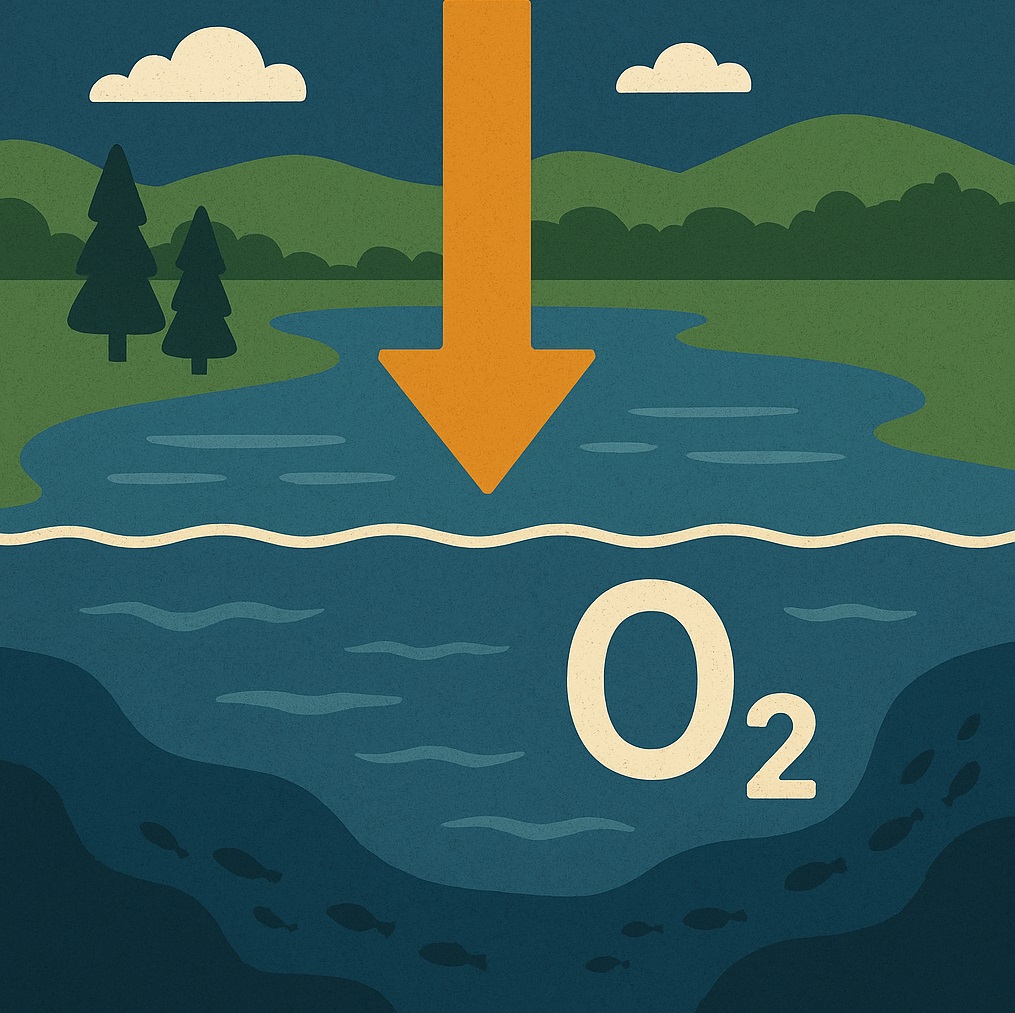
Recent research has uncovered some concerning trends in our freshwater ecosystems. Climate change and rising temperatures are causing a drop in dissolved oxygen (DO) levels in lakes around the world. A thorough examination of more than 15,000 lakes shows that a staggering 83% are facing deoxygenation. This situation presents a significant risk to aquatic life and the overall health of these ecosystems.
Dissolved Oxygen Levels
Dissolved oxygen is critical for the survival of aerobic organisms in water. When there’s enough DO, it helps sustain diverse biological communities. But if the levels get too low, it can lead to hypoxia, putting fish and other aquatic life in danger.
Impact of Climate Change
Climate change is causing a drop in the amount of oxygen that can dissolve in water. This single factor is responsible for about 55% of the overall reduction in dissolved oxygen levels in our oceans and lakes. As temperatures climb, water’s ability to retain oxygen decreases, which can seriously harm aquatic life.
Role of Eutrophication
Eutrophication happens when nutrient runoff enters our water systems, and it plays a big role in reducing oxygen levels. In fact, it accounts for about 10% of the oxygen loss we see on the surface. When farmers use too many nutrients, it can lead to algal blooms. As these blooms break down, they use up oxygen, which only makes the problem of low dissolved oxygen levels worse.
Effects of Heat Waves
Heat waves have a rapid and pronounced impact on DO levels. They can cause a 7.7% reduction in surface DO. The frequency of heat waves has increased, with an average duration of 15 days per year across global lakes. This trend exacerbates the deoxygenation crisis.
Projections for the Future
Future forecasts suggest that things are likely to get worse. By the year 2100, we can expect a further drop in DO levels, with predictions ranging from 0.34 to 0.76 mg/litre depending on various climate scenarios. It looks like lakes in tropical areas might face the biggest challenges.
Regional Variations in Deoxygenation
Deoxygenation rates are going to differ from one region to another. Europe and North America are expected to see quicker declines than other continents. This difference highlights the importance of developing specific strategies tailored to each region to tackle the problem effectively.
Consequences of Deoxygenation
The decline in DO levels has severe ecological and economic implications. It can lead to reduced nitrogen fixation and increased greenhouse gas emissions. The impacts extend to food security and livelihoods, particularly in communities reliant on fishing.
Importance of Mitigation Strategies
Mitigation and adaptation strategies are essential to combat deoxygenation. Policymakers and environmental managers must prioritise actions to preserve lake ecosystems. Addressing climate change and nutrient pollution is crucial for maintaining healthy freshwater environments.





